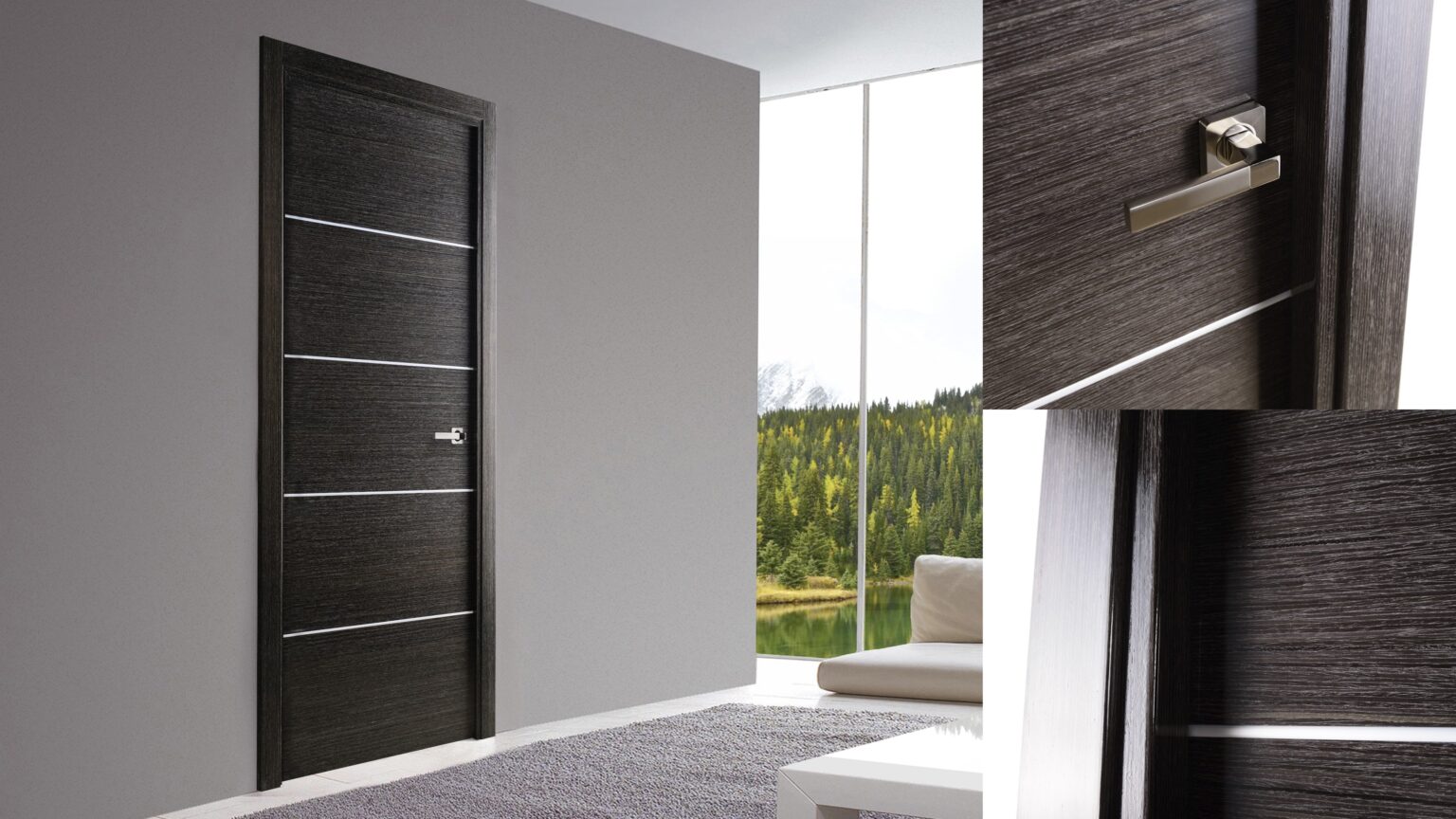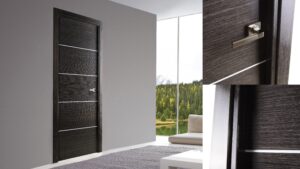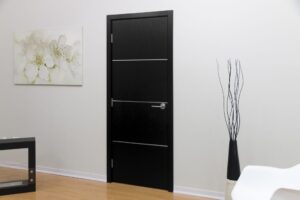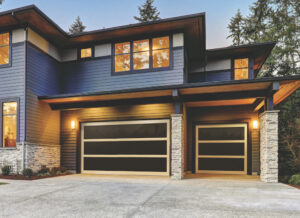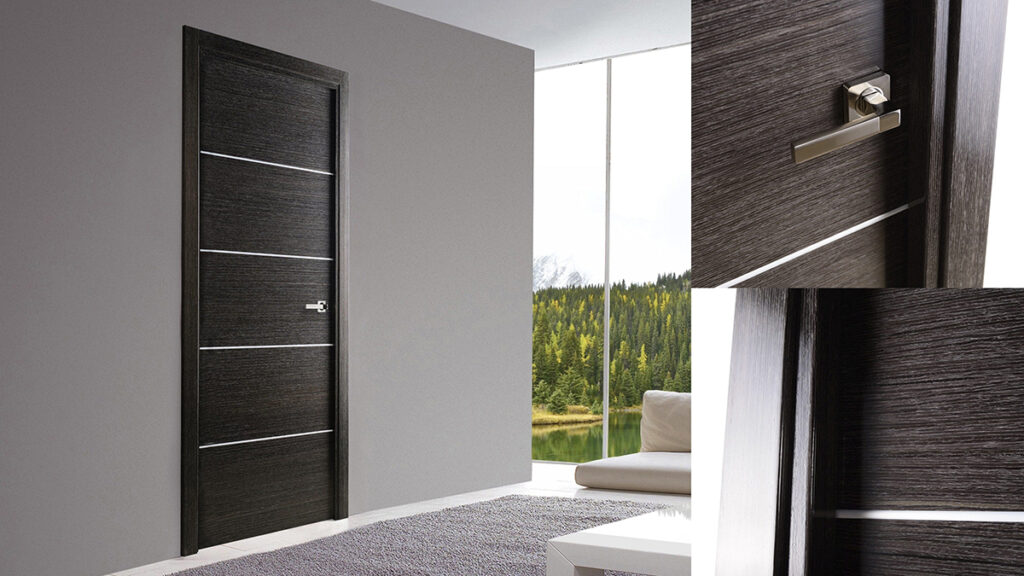American and European interior doors represent more than just functional barriers within the home; they serve as expressions of cultural and design differences. These distinctions go far beyond mere appearances, encompassing style, materials, hardware, and finishing, each influenced by a unique set of traditions and trends.
The classic styles of American doors reflect a rich history rooted in tradition. These doors often feature intricate paneling, raised moldings, and wood finishes like oak or cherry. Their designs are an homage to the colonial and Victorian eras, evoking a sense of nostalgia and timelessness. In contrast, European doors tend to follow a more contemporary and minimalist design philosophy. Clean lines, simplicity, and functionality are at the core of European interior door design. Materials like glass, metal, or high-gloss finishes are common in European doors, giving them a sleek and modern appearance.
A pivotal aspect of these design disparities is the hardware employed in American and European doors. European doors typically use sleek, modern lever handles that seamlessly integrate with their minimalist designs. They also often employ magnetic locks for added security. On the other hand, American doors tend to have more traditional knobs or handles. These knobs often serve as a visual centerpiece on the door, embracing a vintage aesthetic that pairs well with their classic designs.
Hinges are yet another point of distinction between the two styles. European doors often feature concealed or hidden hinges. These hinges are skillfully integrated into the door, creating a streamlined and unobtrusive look. In contrast, American doors commonly use visible mortise hinges. These hinges are a nod to the traditional craftsmanship that characterizes American interior doors.
Materials play a crucial role in the composition of interior doors. American doors are often constructed with a hollow core, prioritizing cost-efficiency and ease of installation. However, this design results in minimal insulation, which can impact energy efficiency and sound insulation. European doors, in contrast, are generally solid core, offering superior insulation options. This allows them to maintain a more stable indoor climate and reduce noise transfer between rooms. European doors also incorporate a wider variety of materials, including veneers, laminates, and glass, further expanding the scope of design possibilities.
Finishing is another element where American and European doors diverge. European doors come pre-finished, which means they do not require any additional painting or staining. This simplifies the installation process and ensures a consistent, high-quality finish. American doors, on the other hand, are often delivered primed or unfinished. This provides homeowners with the flexibility to customize the door’s appearance to their liking, but it also entails additional work and expense.
The choice between American and European interior doors is not simply a matter of aesthetics; it extends to the overall function and feel of the space where these doors will be installed. This decision should be made thoughtfully, considering personal style preferences and the broader design language of the interior. As we delve deeper into the world of American and European interior doors, we will explore each of these elements in greater detail to help you make an informed choice for your home.
The Evolution of American Interior Doors
American interior doors have a rich history that mirrors the broader evolution of architectural styles in the United States. These doors have evolved over centuries, reflecting changing tastes, technologies, and societal norms.
Colonial Era: Simplicity and Functionality
The roots of American interior door design can be traced back to the Colonial era. During this time, doors were characterized by their simplicity and functionality. Most doors were made from solid wood, often in a plank-style construction. These doors were practical and served the primary purpose of privacy and security.
As the country expanded, so did the variety of woods used in door construction. In New England, for example, pine was a common choice due to its abundance. In the Southern states, doors were often crafted from heart pine, a dense and durable wood.
Victorian Era: Ornate Elegance
The Victorian era marked a significant departure from the simplicity of the Colonial period. American interior doors began to feature more elaborate designs, incorporating ornate moldings and intricate paneling. Mahogany, walnut, and oak became popular choices for door materials, and these woods were often carved and adorned with detailed designs.
These ornate doors were an expression of the opulence and excess of the time. They reflected the aspirations of homeowners to showcase their wealth and sophistication through their home decor. Victorian-era doors also featured decorative glass panels, often with stained or leaded glass, adding a touch of artistry to the home’s entryways.
Arts and Crafts Movement: A Return to Simplicity
In the late 19th and early 20th centuries, the Arts and Crafts movement emerged as a response to the excesses of the Victorian era. This design philosophy emphasized simplicity, craftsmanship, and the use of natural materials. American interior doors during this period reflected these values.
Doors from the Arts and Crafts movement were typically made from oak or other native hardwoods. They featured clean lines and unadorned surfaces, focusing on the inherent beauty of the wood itself. This design movement promoted handcrafted elements, and doors often incorporated handmade hardware, such as wrought iron handles.
Mid-Century Modern: Clean Lines and Minimalism
The mid-20th century brought the rise of the Mid-Century Modern design movement, which had a profound influence on American interior doors. This era embraced clean lines, minimalism, and an integration of indoor and outdoor spaces. American doors of this time reflected these principles.
Mid-Century Modern doors often featured simple, unembellished designs. Materials like glass and metal were frequently used, promoting transparency and an open feel within the home. Sliding doors and pocket doors gained popularity during this period, emphasizing functionality and space-saving design.
Contemporary Trends: A Blend of Styles
In recent decades, American interior doors have witnessed a blending of styles. Homeowners have the freedom to choose from a wide array of designs, materials, and finishes to suit their personal preferences and the overall aesthetics of their homes. While traditional designs still hold a special place in many homes, contemporary and minimalist door styles have gained popularity, reflecting a more globalized design sensibility.
Today, American interior doors continue to evolve, incorporating elements from various design movements to create doors that are both functional and aesthetically pleasing. These doors cater to the diverse tastes of homeowners, allowing them to choose designs that align with their personal style and the overall look and feel of their interiors.
European Interior Doors: Embracing Modern Minimalism
European interior doors have a distinct design philosophy that places a strong emphasis on modern minimalism. These doors reflect the contemporary architectural trends of Europe and are known for their clean lines, innovative materials, and sleek hardware.
Modern European Design: The Influence of Bauhaus and Minimalism
The foundation of European interior door design can be traced to the influential Bauhaus movement, which originated in Germany in the early 20th century. Bauhaus principles emphasized the fusion of form and function, minimalism, and the use of modern materials. These principles have left a lasting mark on European interior door design.
European doors often feature unadorned surfaces, creating a minimalist and streamlined appearance. These designs prioritize simplicity and functionality, serving as a seamless extension of the contemporary European home. The materials used in European doors are diverse, ranging from wood veneers to glass, metal, and high-gloss finishes. These materials allow for a broad spectrum of design possibilities, accommodating a wide range of interior styles.
**Sleek Hardware: Lever Handles and Magnetic Locks

